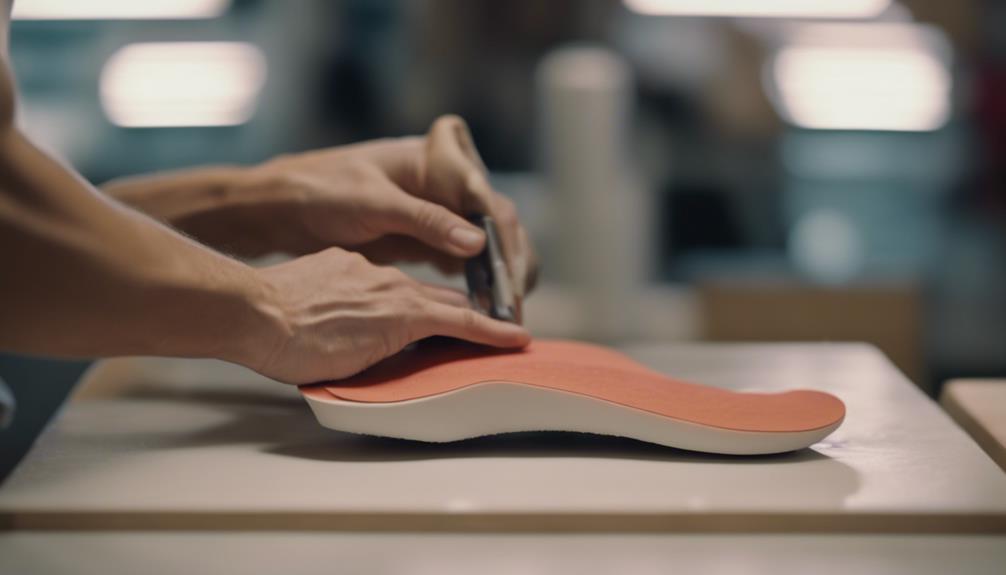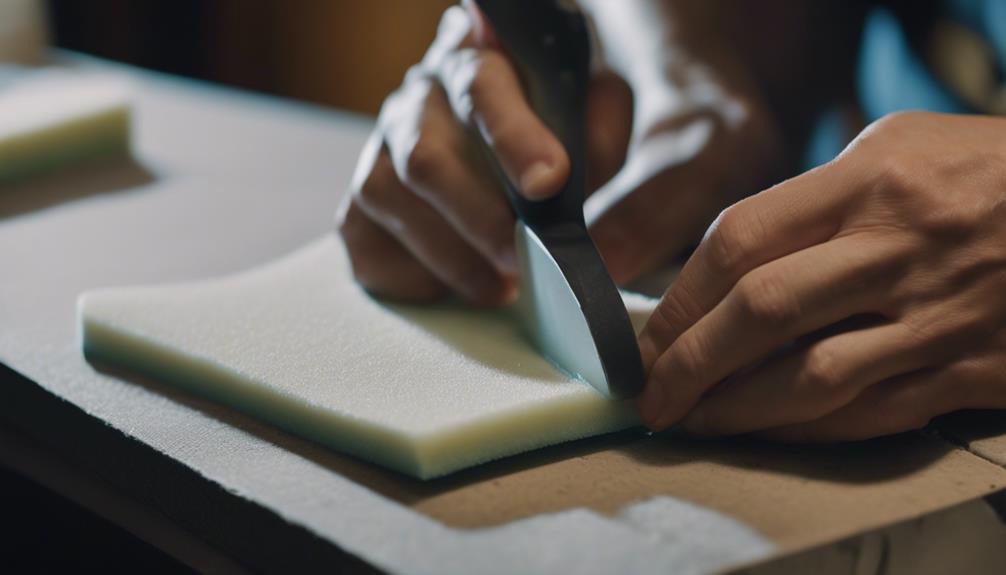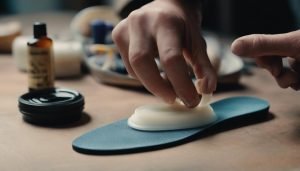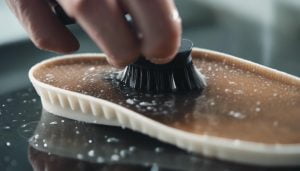This post contains affiliate links. As an Amazon Associate, we earn from qualifying purchases.
Efficiently crafting a shoe insole involves a methodical approach to ensure optimal fit and comfort. From utilizing basic materials like cardboard or repurposing a yoga mat to investing in specialized memory foam or gel insoles, the options are diverse. Each method offers distinct advantages that cater to various needs.
However, the key to crafting a truly personalized insole lies in understanding the intricacies of foot anatomy and gait mechanics. By exploring the process of customizing insoles for individual comfort and support, one can embark on a journey towards enhanced footwear experiences.
Key Takeaways
- Customize insoles for personalized support and comfort
- Ensure proper fit and alignment for foot health
- Maintain and clean regularly for longevity
- Consult with professionals for tailored orthotic solutions
Materials Needed for DIY Insoles
To create effective DIY insoles, it is essential to gather the necessary materials that will provide comfort and support for your feet. Common materials like cardboard can serve as a sturdy base, while memory foam offers cushioning for impact absorption.
For individuals seeking personalized support, custom orthotic insoles are recommended and can be obtained through consultation with a podiatrist. Memory foam, known for its contouring properties, can be a great choice for custom insoles as it molds to the shape of the foot, providing tailored comfort.
Step-by-Step Guide to Making Insoles
For crafting your own shoe insoles, begin by accurately tracing the shape of your old insole or foot onto cardboard or high-density foam rubber. This step ensures a proper fit and allows for customization. Cutting out the insole shape using sharp scissors, a bandsaw, or other cutting tools is crucial for precision. To enhance comfort and durability, attach a cloth liner to the insole, sewing it on with a sewing machine. Difficulty in finding insoles with adequate arch support makes this DIY project valuable. Once completed, these homemade insoles can be inserted into your shoes, providing personalized support and pain relief.
| Step | Instructions |
|---|---|
| Trace insole shape | Use cardboard or foam rubber for accuracy |
| Cut out insole shape | Utilize sharp scissors or cutting tools |
| Attach cloth liner | Sew on the liner for added comfort and durability |
| Customize thickness | Cut multiple layers for uniformity |
Customizing Insoles for Comfort

Customizing insoles for enhanced comfort involves tailoring the support and cushioning to meet individual foot requirements. Personalized insoles can alleviate foot pain, improve posture, and enhance overall comfort.
DIY insoles allow adjustments in thickness, material, and shape to suit specific needs, providing a cost-effective solution compared to pre-made options. Properly fitted custom insoles can prevent issues like plantar fasciitis and flat feet, ensuring optimal support and comfort.
Tips for Ensuring Proper Fit
When customizing insoles for enhanced comfort, ensuring a proper fit is crucial to maximize support and alleviate foot pain.
To make sure the insole fits correctly, ensure it sits snugly inside the shoe without any excess material that could cause discomfort. Check that the insole aligns properly with the shoe's arch and heel, especially important for individuals with fallen arches, to provide optimal support.
If needed, trim the insole to customize the fit and prevent any rubbing or pressure points. Test the insole by walking or standing to confirm it offers adequate cushioning and stability.
Periodically replace insoles, particularly if they show signs of wear or flattening, to maintain foot health and comfort over time.
Maintenance and Longevity of Insoles

To ensure the longevity and effectiveness of insoles, proper maintenance practices such as regular cleaning and airing out are essential. When caring for your insoles, it's important to follow specific care instructions to maximize their lifespan. Avoid using harsh chemicals or washing them in a machine, as this can lead to damage. Instead, opt for gentle cleaning methods to keep them in good condition.
Additionally, regularly checking the condition of your insoles and replacing them when necessary is crucial for maintaining foot health and comfort. By taking care of your insoles, you can prevent discomfort and issues associated with worn-out or unhygienic inserts.
Maintenance Tips for Insoles:
- Clean insoles regularly using gentle methods.
- Avoid harsh chemicals and machine washing.
- Follow care instructions provided for optimal longevity.
Frequently Asked Questions
Can I Make My Own Insoles?
Yes, creating your own insoles is a feasible option. DIY insoles offer customization for any shoe size and shape, personalized support and comfort, cost-effectiveness, and the ability to alleviate foot pain effectively by using materials like memory foam, gel, or custom orthotics.
How Do You Make a Shoe Insole at Home?
Creating custom insoles at home involves tracing your foot or existing insole onto material like memory foam or cork, cutting out the design, and experimenting with different materials for comfort. Proper care and consulting a podiatrist for orthotic insoles are crucial.
What Can I Use Instead of Shoe Insoles?
When considering alternatives to traditional shoe insoles, materials like memory foam, gel, cork, or custom orthotic insoles can provide personalized support. Gel insoles offer cushioning and shock absorption, while memory foam insoles prioritize comfort, and custom orthotic insoles ensure optimal foot health benefits.
What Is the Best Material to Make Insoles?
When determining the best material for insoles, factors like cushioning, support, and customization must be considered. Memory foam offers comfort, gel provides shock absorption, custom orthotics cater to specific needs, cork allows layering, and traditional insoles blend materials for increased support.
Conclusion
In conclusion, making your own shoe insoles can be a cost-effective and customizable way to improve comfort and support. By using materials such as cardboard, yoga mats, memory foam, gel, or custom orthotics, you can create insoles tailored to your specific needs.
Following the steps outlined and ensuring proper fit and maintenance will help prolong the longevity of your insoles, providing ongoing comfort for your feet.



